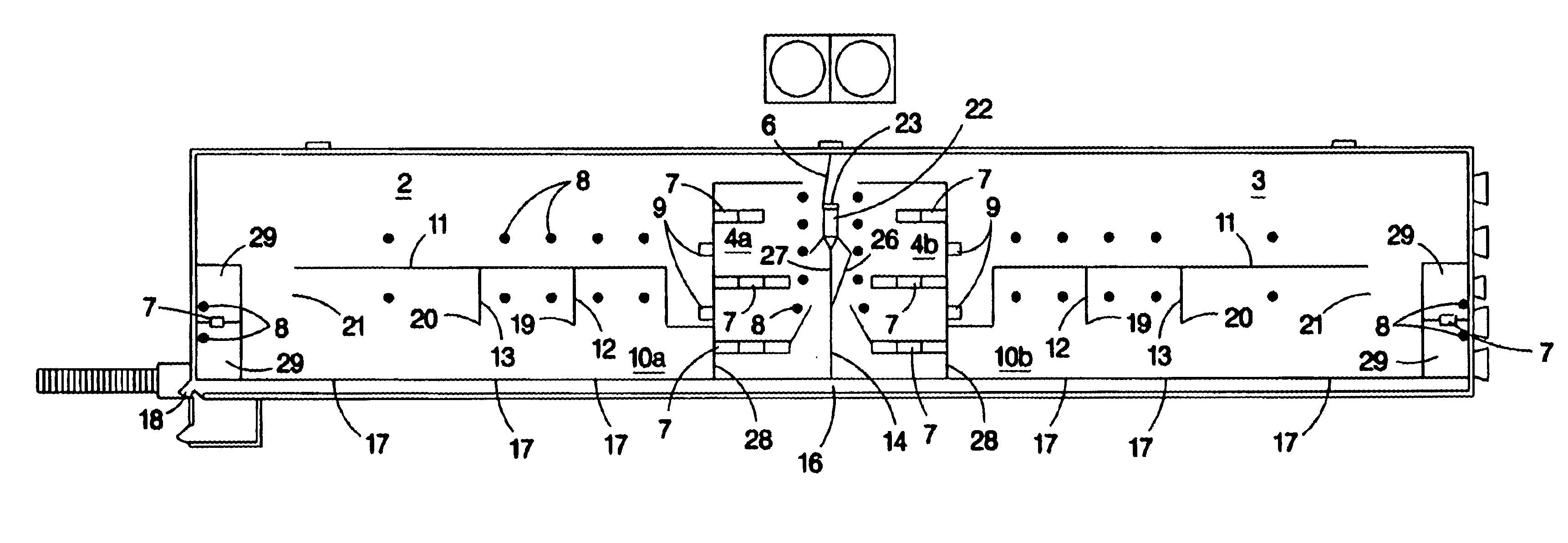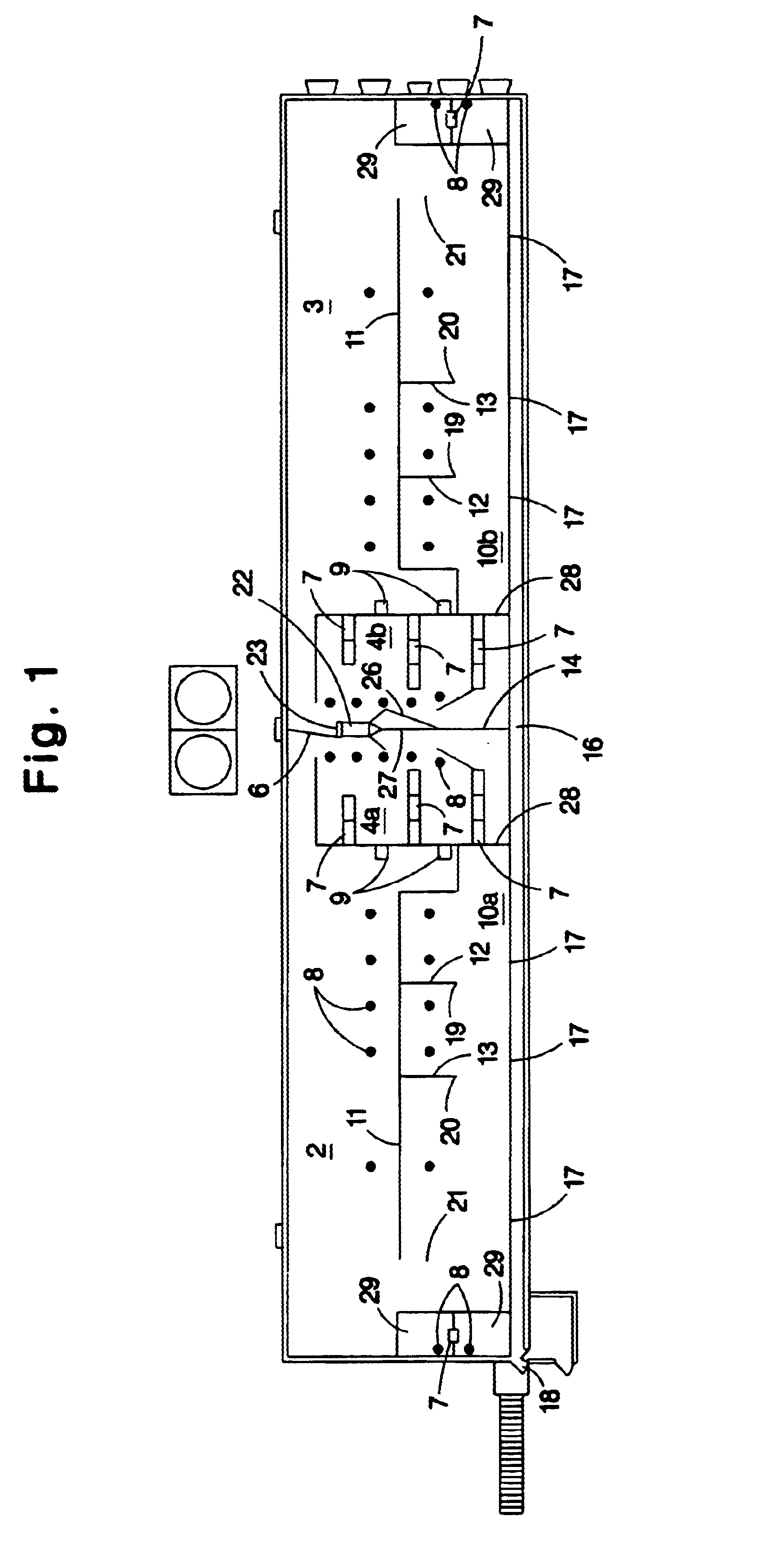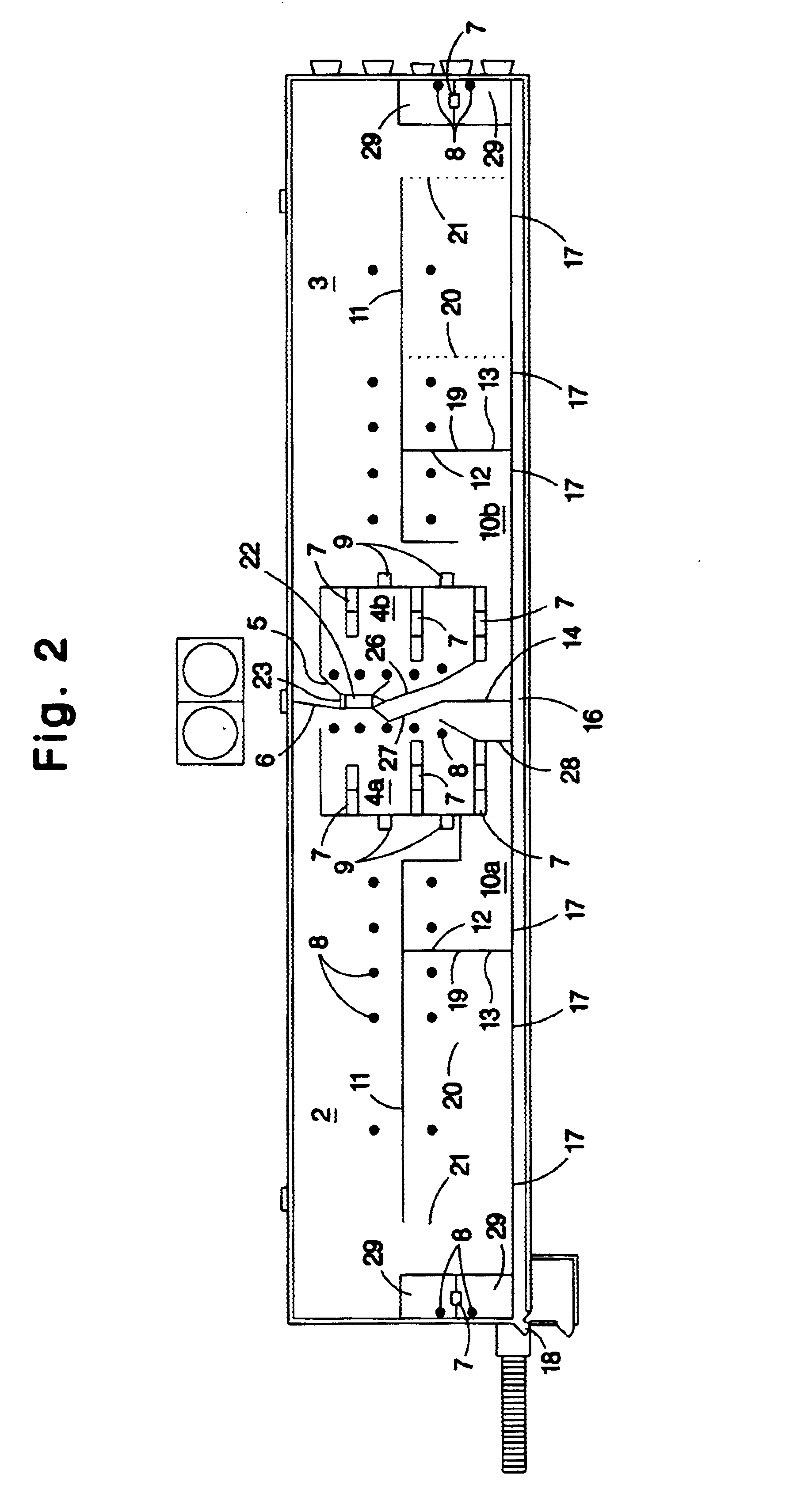Hog facility management system and method
a technology for managing systems and hog facilities, applied in the field of hog facility management systems and methods, can solve the problems that systems simply cannot segregate animals with sufficient accuracy, and achieve the effects of reducing equipment and maintenance costs, increasing sorting precision, and increasing protein
- Summary
- Abstract
- Description
- Claims
- Application Information
AI Technical Summary
Benefits of technology
Problems solved by technology
Method used
Image
Examples
first embodiment
FIG. 8 illustrates the single-room self-sorting hog facility 1 shown in FIG. 7 configured for sorting market weight hogs from pen 3 into holding area 10, while FIG. 9 is a closer, or close up, view showing the positioning of the fencing system around scale 22 during such sorting operation. During sorting of pen 3, hogs in pen 2 will continue normal feeding. Similar to the first embodiment, gate 5 is positioned between living area 3 and feeding area 4b so that the hogs are prevented from entering such feeding area through the opening now blocked by gate 5. In addition, gate 6 is positioned extending between the front side of scale 22 closest to pen 2 and the outer wall of building 1. Hogs in pen 3 are thereby prevented from entering feed area 4b by any other means except by crossing electronic sorting scale 22 through the corridor created by gates 5 and 6. Gate 23 positioned over the front of scale 22 is also removed prior to commencing sorting.
In addition to positioning gates 5 and ...
second embodiment
Animals in holding area 10 will usually remain there until market truck pickup. However, as illustrated in FIGS. 10 and 11, in the second embodiment hogs in pen 2 will also typically be sorted into holding area 10 in a similar manner, so that market ready hogs in both pens 2 and 3 are sorted into the same holding area. This is accomplished by reversing the gating layout shown in FIGS. 8 and 9. Gates 5 and 6 are positioned so that the hogs in pen 2 can only enter feeding area 4a by passing through electronic sorting scale 22, with gate 23 now removed. Gate 5 is situated in the opening between living or pen area 2 and feeding area 4a, while gate 6 is positioned between the outer wall of hog building 1 and the front side closest to pen 3 of scale 22, forming a short corridor from pen 2 to scale 22. In addition, gate 26 is now pivoted so that it is connected between the free end of gate 32 and gate 14, while gate 27 is pivoted so that it is now secured between the rear tip of scale 22 a...
PUM
 Login to View More
Login to View More Abstract
Description
Claims
Application Information
 Login to View More
Login to View More - R&D
- Intellectual Property
- Life Sciences
- Materials
- Tech Scout
- Unparalleled Data Quality
- Higher Quality Content
- 60% Fewer Hallucinations
Browse by: Latest US Patents, China's latest patents, Technical Efficacy Thesaurus, Application Domain, Technology Topic, Popular Technical Reports.
© 2025 PatSnap. All rights reserved.Legal|Privacy policy|Modern Slavery Act Transparency Statement|Sitemap|About US| Contact US: help@patsnap.com



